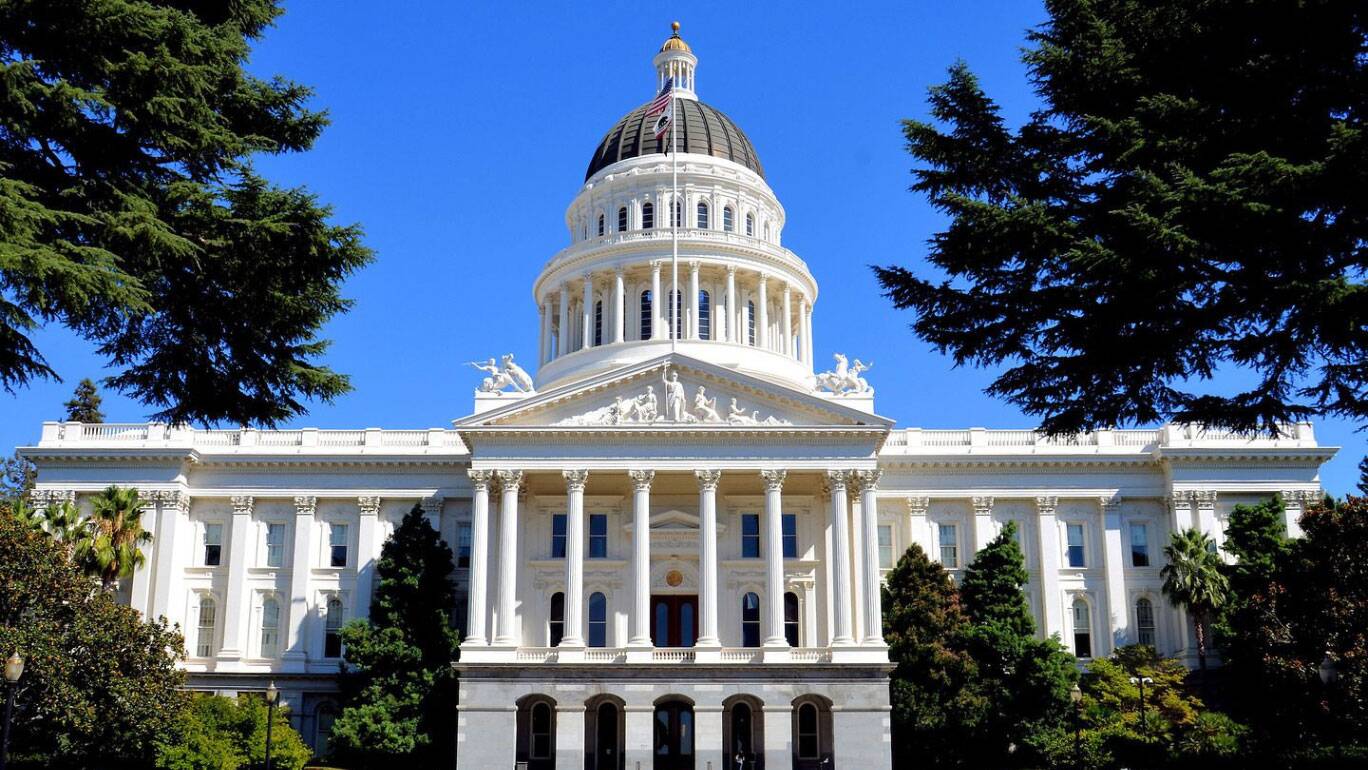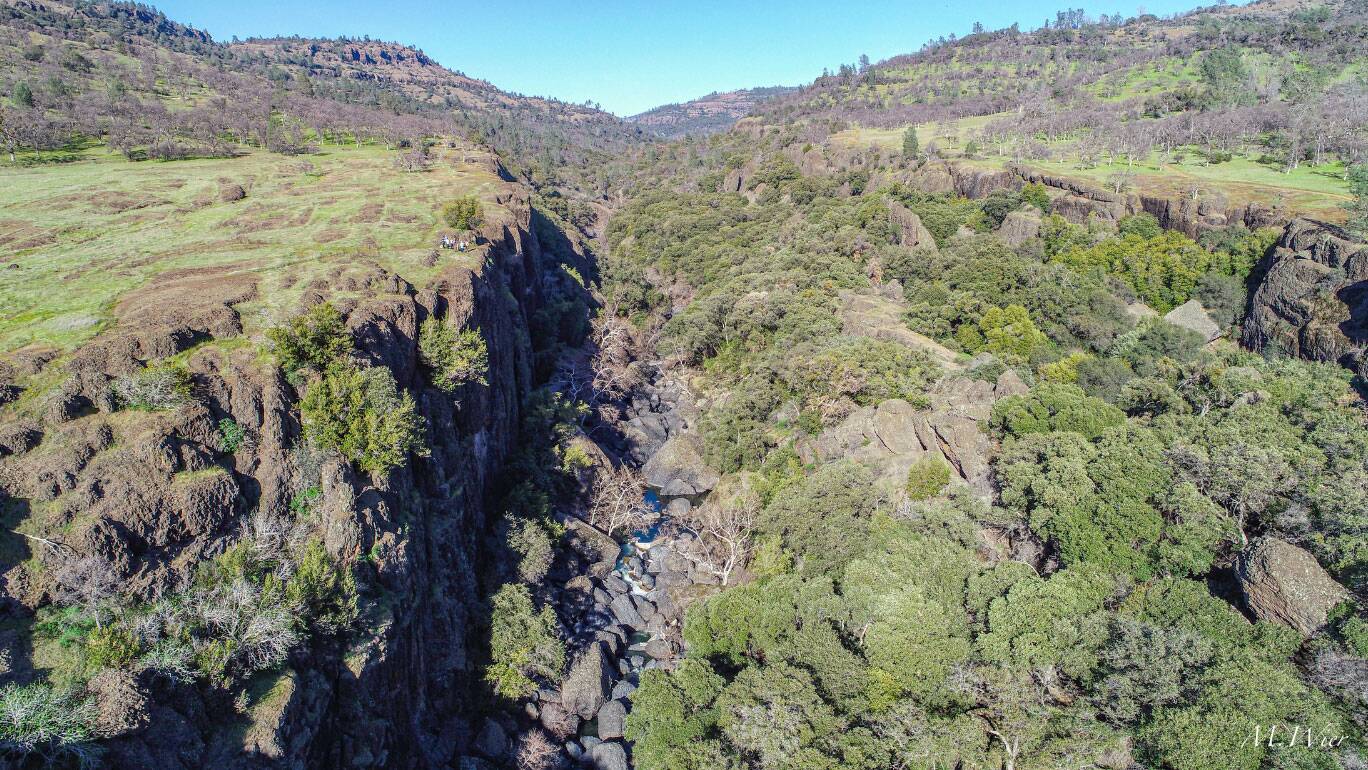A floodplain is a low-laying area of ground adjacent to a river, subject to routine (you guessed it!) flooding. Cyclical flooding allows river ecosystem access to the tremendous food web of resources produced in floodplain wetlands. It is the act of the river expanding to inundate these nutrient-rich lands that allows the river food web access to the solar energy stored in floodplain plants and soils. This energy travels into the water via microbial break down of plant matter. Microbes and bacteria eat the nutrients, which in turn feed abundant invertebrates, which in turn feed fish and birds. It’s this consistent inundation of floodplains that allows river valleys to actually make fish!
Reactivating a Disconnected Food Web
Historically, California’s Central Valley was home to millions of acres of floodplain habitat that supported, among other species, critically endangered Chinook salmon. As small juveniles on their way to sea, these fish fed on the abundant food produced on floodplain habitat. The larger a baby fish is when it reaches the ocean, the more likely it is to survive several years in the marine environment and return to the river as a large adult salmon ready to spawn.
In order to develop the valley for agriculture and permanent settlements, flood control structures such as levees were constructed to corral mighty rivers and push water quickly through the system, hindering natural flood processes. Over time, these levees made the Central Valley easier to farm. However, as a result, floodplains were disconnected from rivers, effectively starving river food webs and the species dependent on them for survival.
Today, 95% of the Central Valley’s historical floodplains are cut off from the river by levees, preventing endangered Chinook salmon from accessing their primary food source: bugs. When a floodplain is connected, it provides a place for a river to flood into, creating a wetland habitat that breeds bugs and other macroinvertebrates that offer food for both fish and birds. Its connection to a river means that fish can access this bug buffet either via the water channeling back into the river or via the fish themselves swimming out into the floodplain.
CalTrout works with UC Davis researchers to mimic and restore these natural processes on floodplains via two different restoration project models: the Nigiri project and Fish Food on Floodplain Farm Fields (Fish Food) project. Through the Nigiri project, juvenile salmon leave the river for floodplain habitat to feed and grow. Through the Fish Food project, fish stay in the river channel, and the food web is delivered back to them via floodplain water, rich in bugs and other nutrients, draining from flooded agricultural fields and managed wetlands reconnecting the river (and the starving fish confined within its leveed banks) with floodplain-derived food web resources.
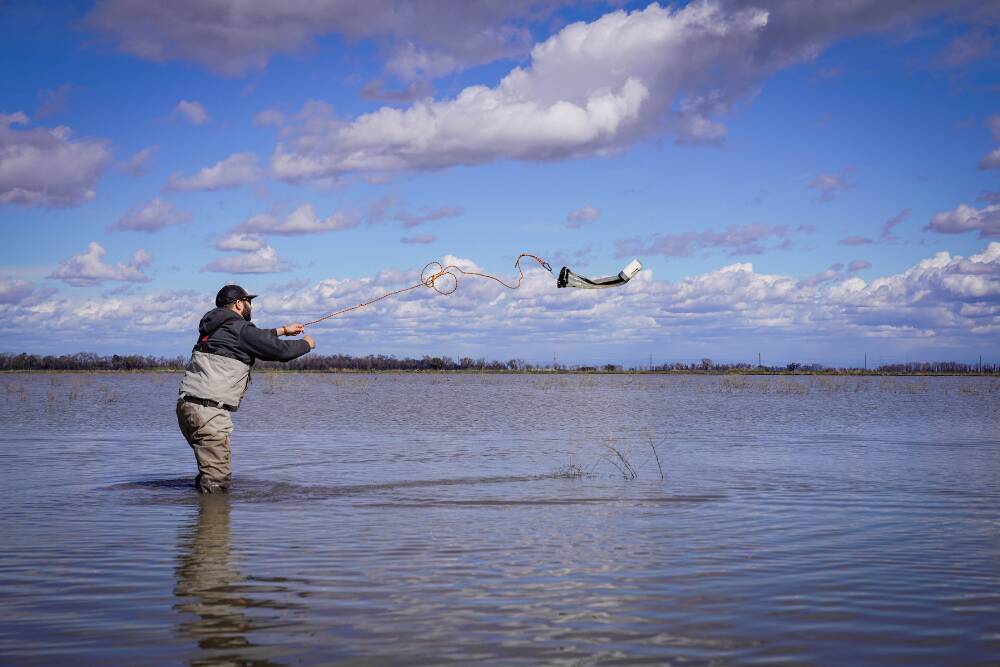
Jacob Montgomery, CalTrout Senior Project Manager, works on CalTrout's Fish Food Project.
Floodplain Forward Coalition
None of this restoration work can be accomplished alone. In order to give struggling salmon populations the best shot at survival, CalTrout has helped bring together 27 entities (including other conservation non-profits, farmers, and governmental agencies) to form the Floodplain Forward Coalition, where we contribute our vision, supported by decades of scientific research and knowledge, of an ecologically functioning valley where endangered fish populations can flourish once again.
The Floodplain Forward Coalition is a group of landowners, growers, water suppliers, conservation groups such as CalTrout, and governmental agencies who are all committed to investing in projects that advance floodplain reactivation and improve habitat for fish and wildlife while maintaining farming and managed wetland operations. Groups within the coalition, all with varying political interests and expertise, have come together to dedicate their time, resources, and advocacy to find the best possible solutions that support vibrant landscapes, wildlife, cities, farms, rural communities, and river systems across the Sacramento Valley.
In 2021, our commitment to these solutions was further strengthened with the signing of a Memorandum of Understanding (MOU) by CalTrout, Ducks Unlimited, the California Rice Commission, and the Northern California Water Association. The MOU formalizes our organizations’ relationships and reinforces CalTrout’s commitment to ecosystem-level solutions to salmon recovery. This agreement also serves as a template for CalTrout’s work with the waterfowl community and public and private landowners as we develop fish food production projects in the Suisun Marsh, the Delta, and the Grasslands region of the San Joaquin Valley.
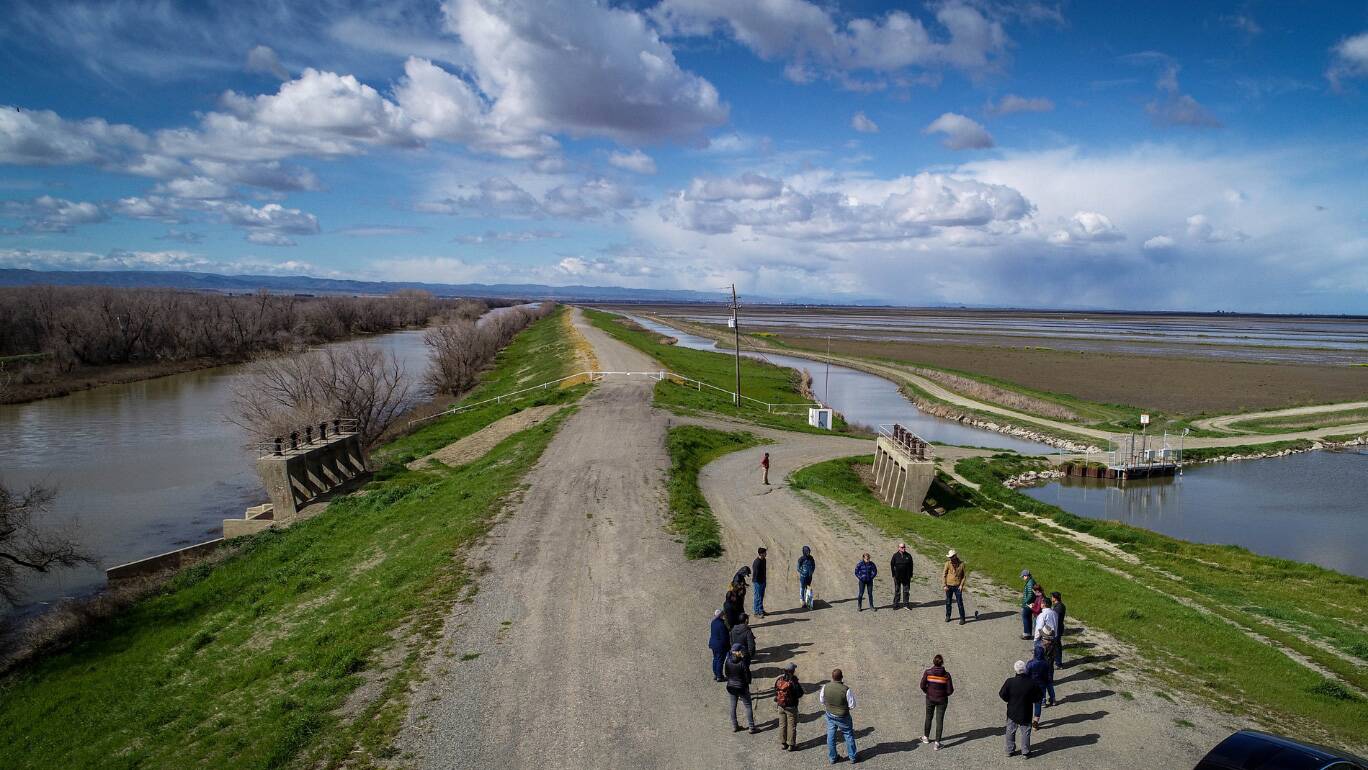
The Floodplain Forward Coalition is a group of landowners, growers, water suppliers, conservation groups such as CalTrout, and governmental agencies who are all committed to investing in multi-benefit projects.
Lending a Policy Eye to Floodplains
In addition to science and on-the-ground restoration projects, the Coalition utilizes policy expertise to build relationships with state and federal agencies, to advocate for funding opportunities for coalition projects, and to communicate our science-based solutions to key decision makers in the state and federal government.
As Policy Associate at California Trout, Kam Bezdek was thrilled to join the Floodplain Forward Coalition to support our Central Valley region. “When I first joined CalTrout, the Nigiri Project was one of the first projects I got to know,” she explained. “It’s exciting to see the level of collaboration taking place in the Central Valley even as we face an increasingly unpredictable climate in the future.”
Within the Floodplain Forward Coalition, Bezdek attends monthly meetings and tours with other policy professionals as they advocate for project funding and permitting pathways. “Our goal within policy is to get key decision-makers excited about the science and restoration efforts put forth by the Coalition. We also build relationships with them so that we can connect them to the farmers and conservationists that tend to these projects every day,” she said.
"I see my job as turning solid science into policy action."
KAM BEZDEK
“What I am learning in particular is that the science has created and benefitted these multi-benefit projects, where one drop of water can not only support fish and farms, but the restoration of an entire wetland ecosystem that was native to the Central Valley. By meeting multiple needs at once, this project demonstrates that was is good for fish is also what is good for all of California.”
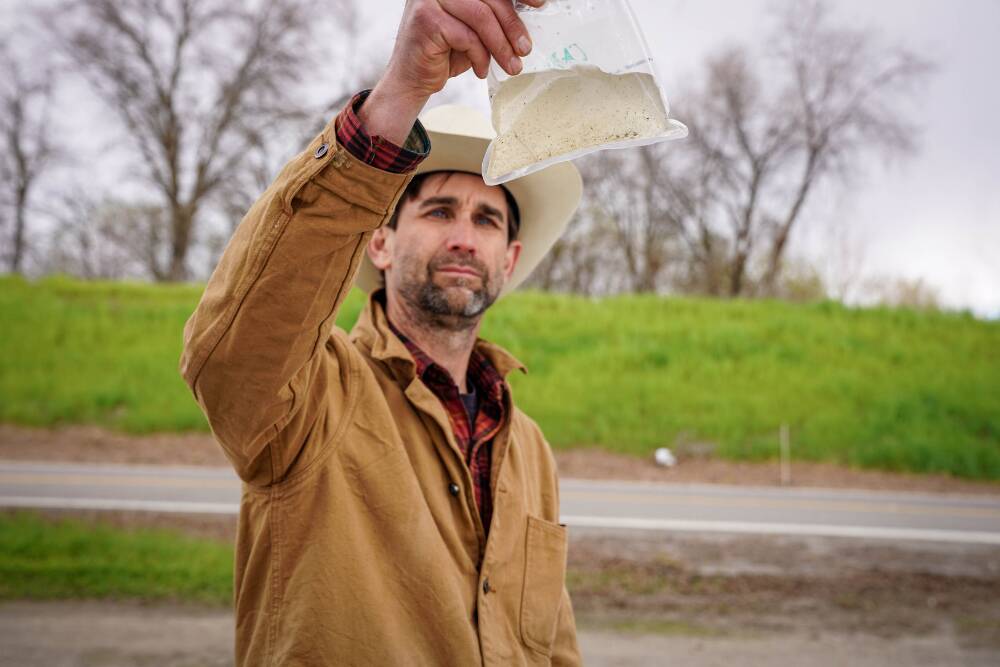
Jacob Katz holds a bag of bug-rich water from the floodplain. Katz is CalTrout's Senior Scientist and Central Valley Regional Director.
Jacob Katz, CalTrout Central Valley Regional Director & Senior Scientist, has devoted his career to floodplain forward work. His team seeks to expand their efforts each year to tackle floodplain restoration at the landscape level. “The time is finally ripe to create landscape-level change,” Katz explained. “It’s only when we convince decision makers to invest at that scale that we can even expect to begin to recover these endangered salmon populations. Without Kam and our Policy team’s efforts to embed themselves in this work and build relationships around it, we would be a lot less successful turning this science into real and impactful actions that prove we can build a better future for both fish and people.”

